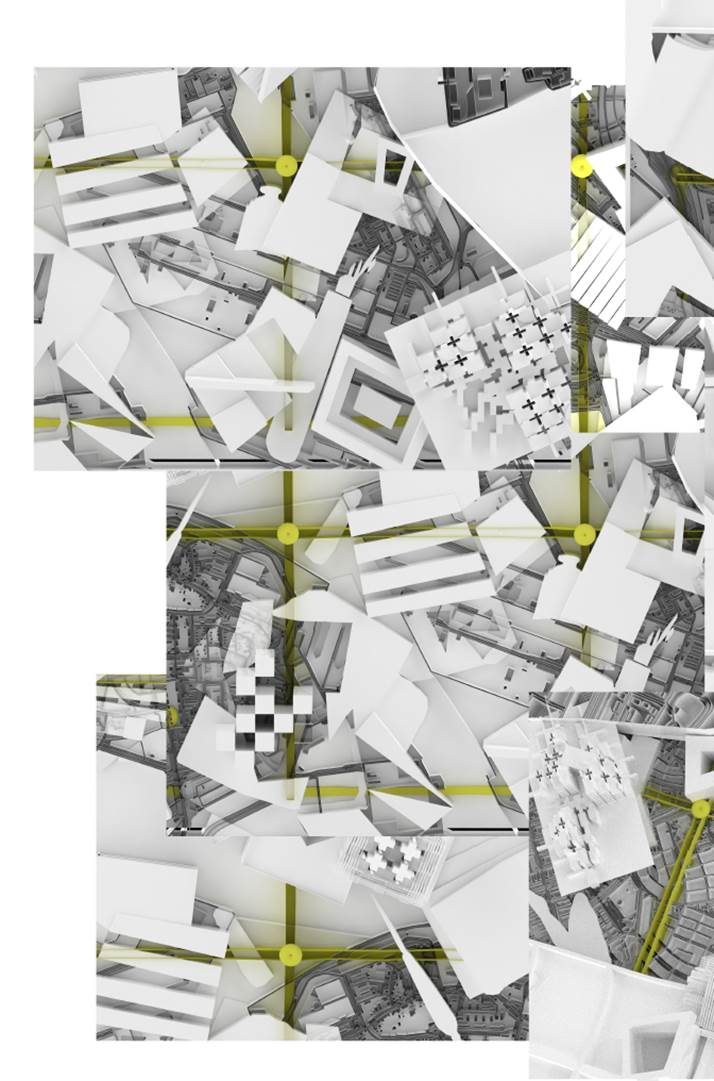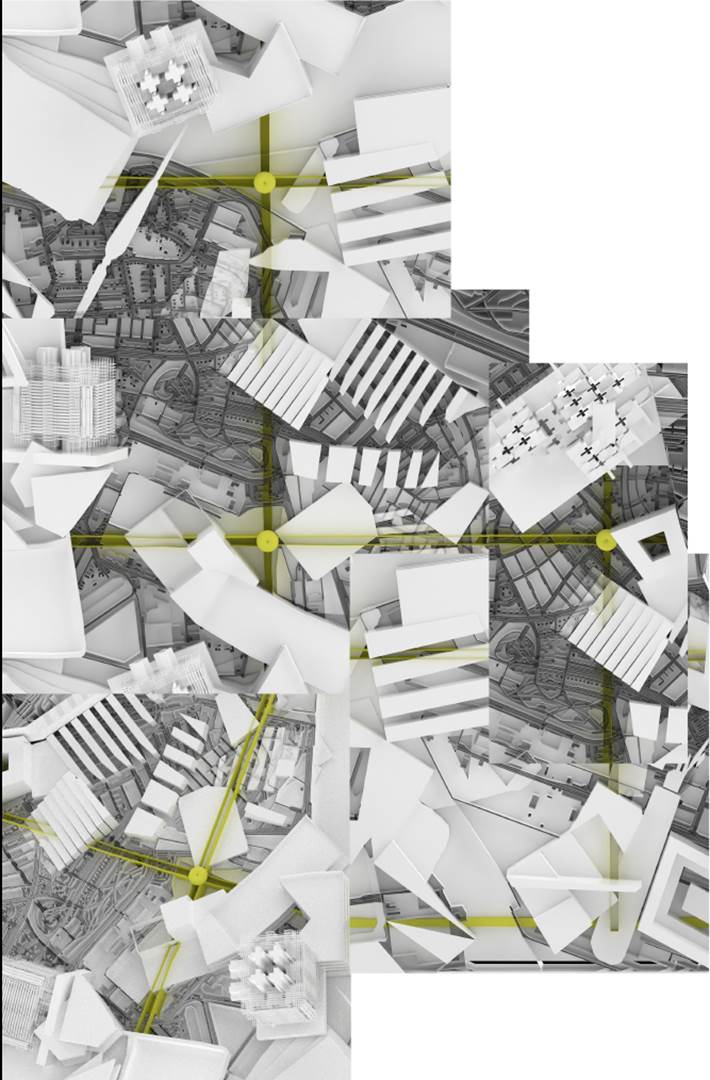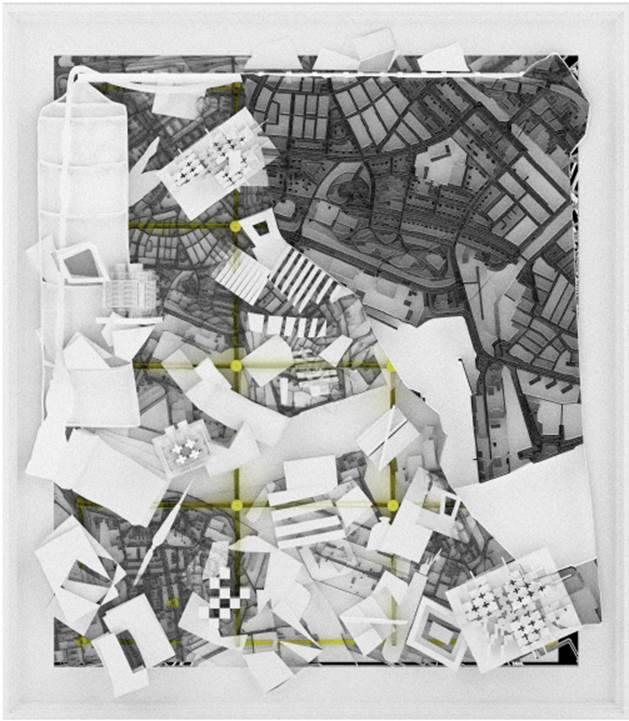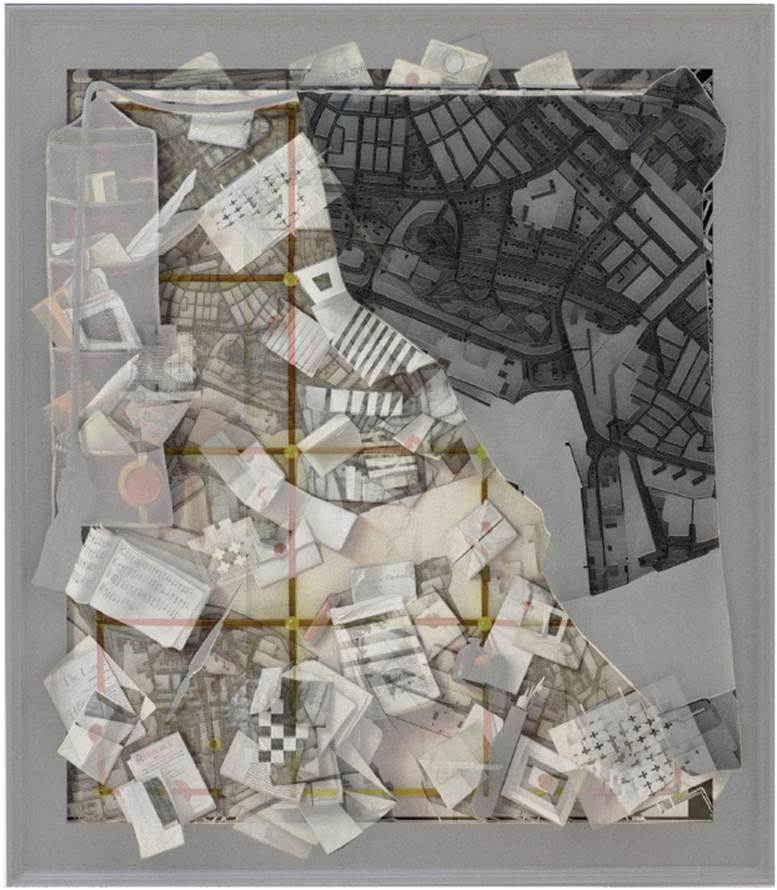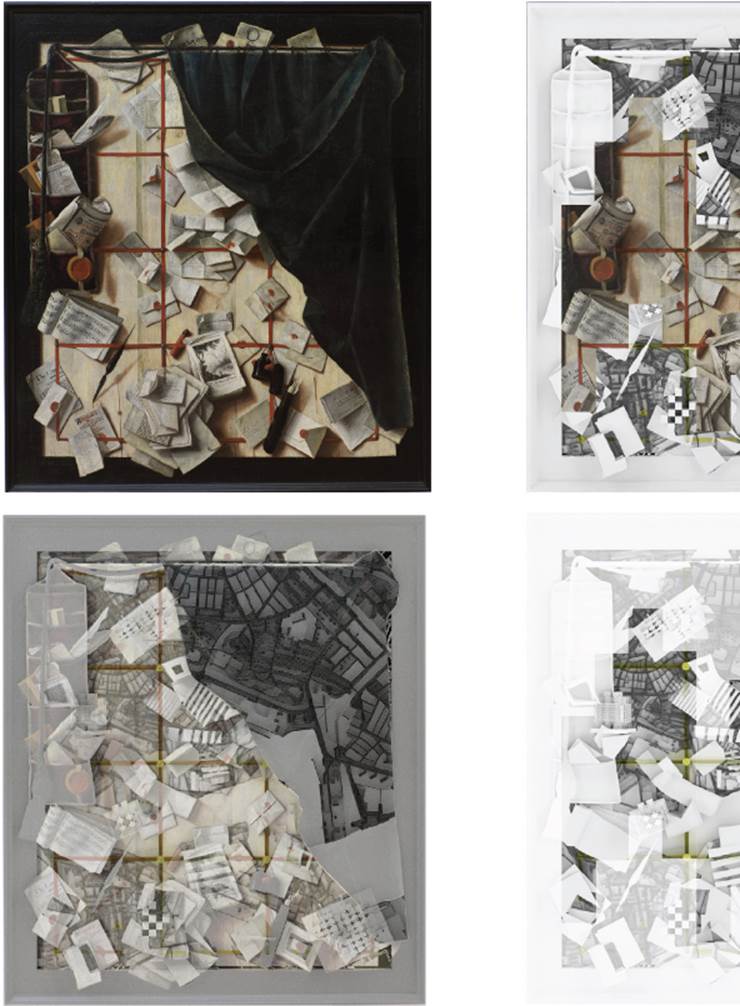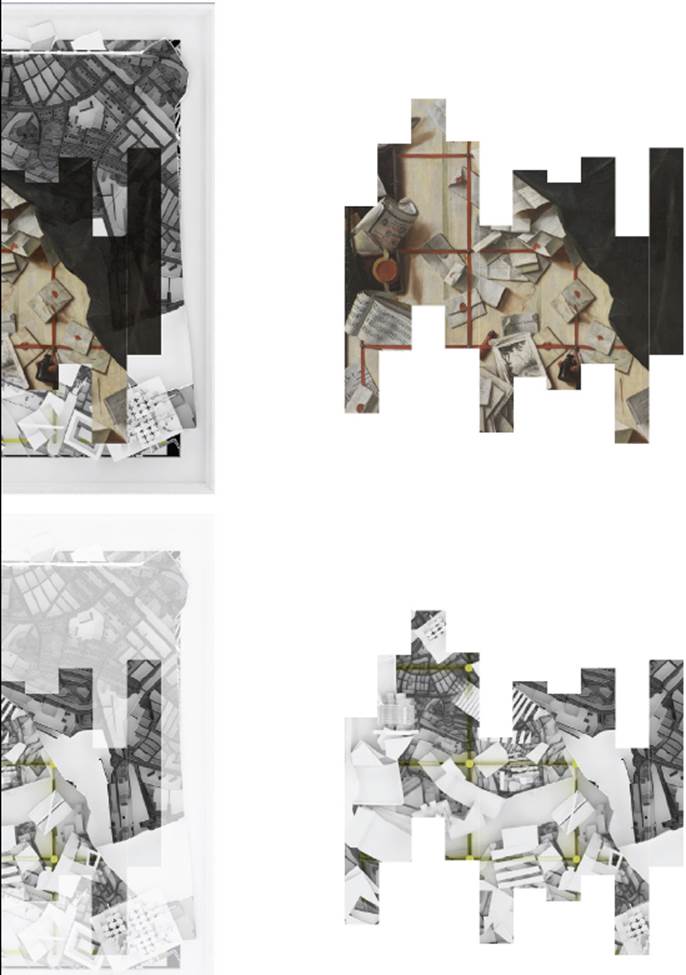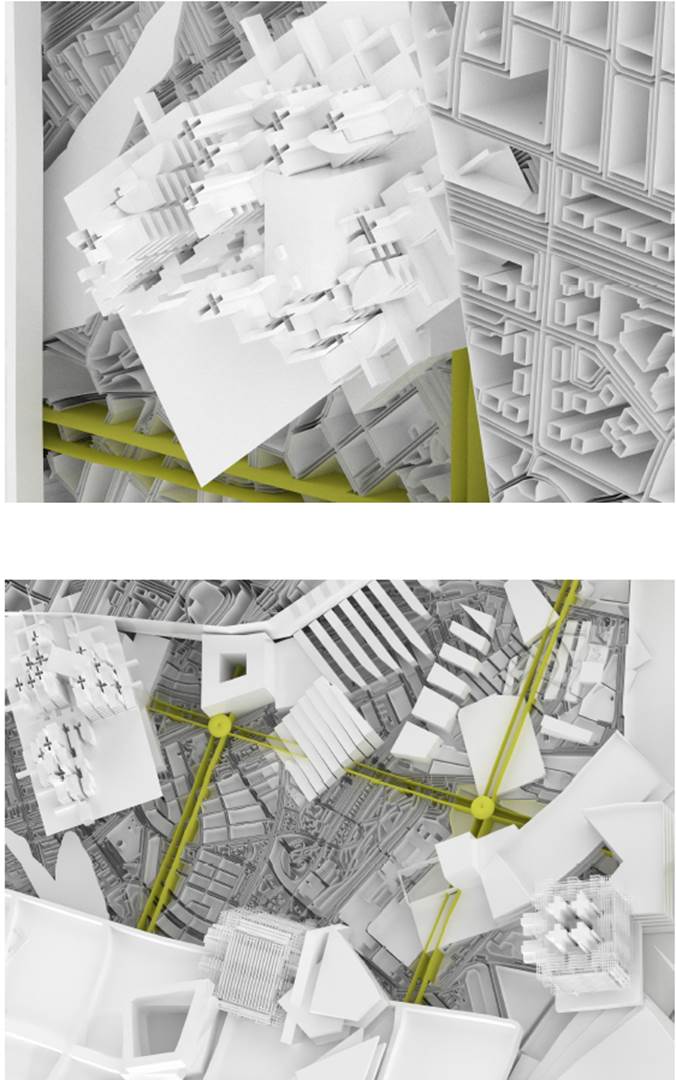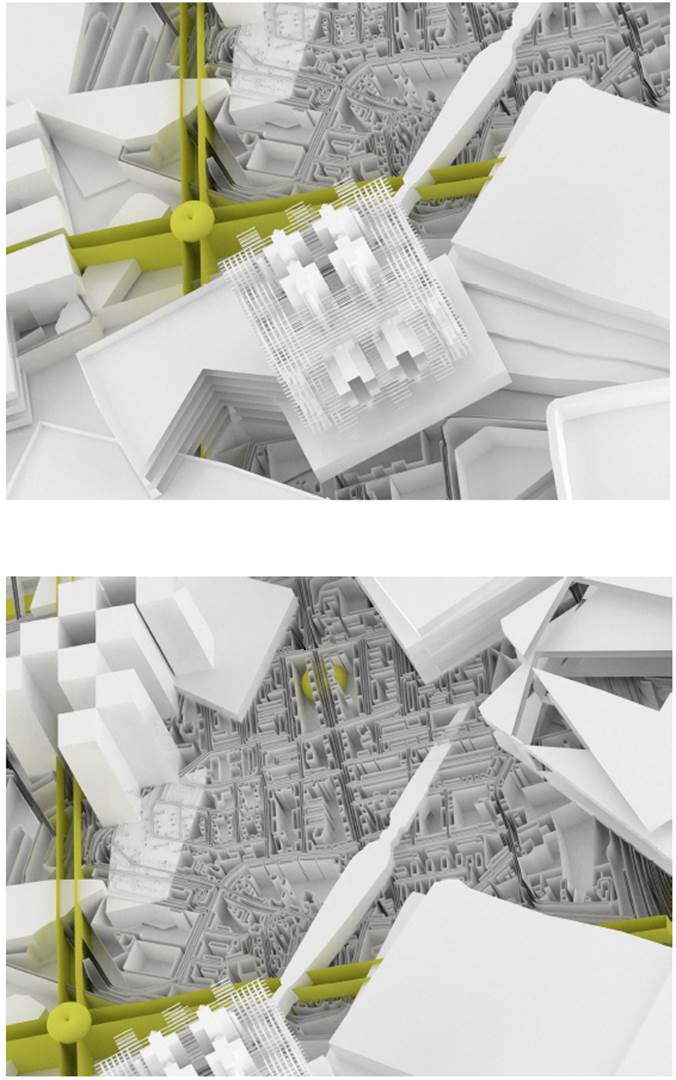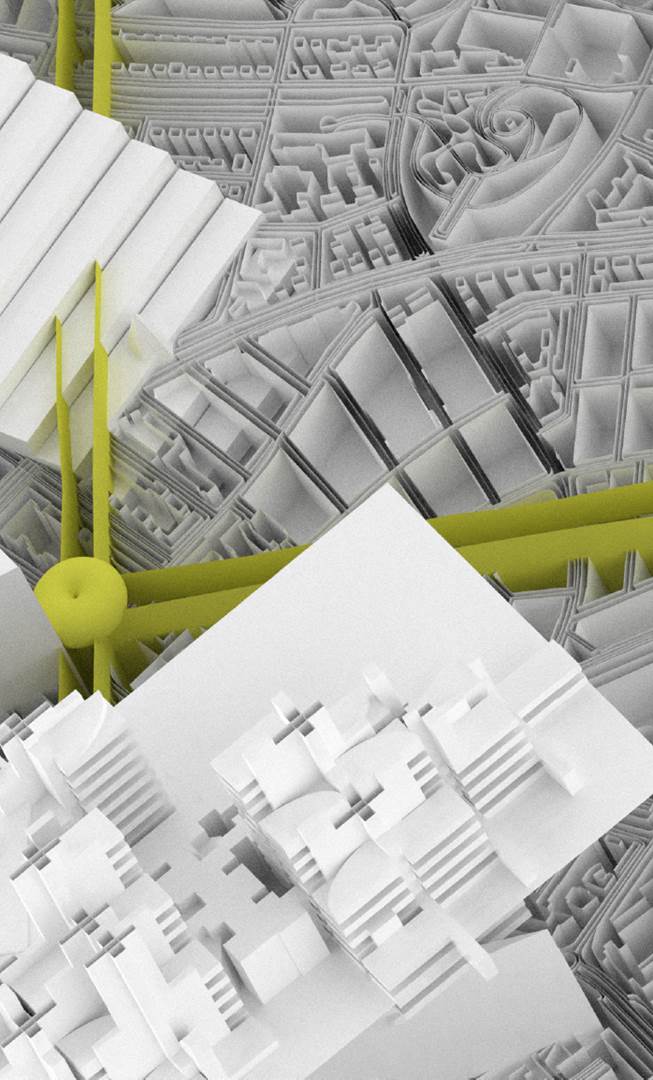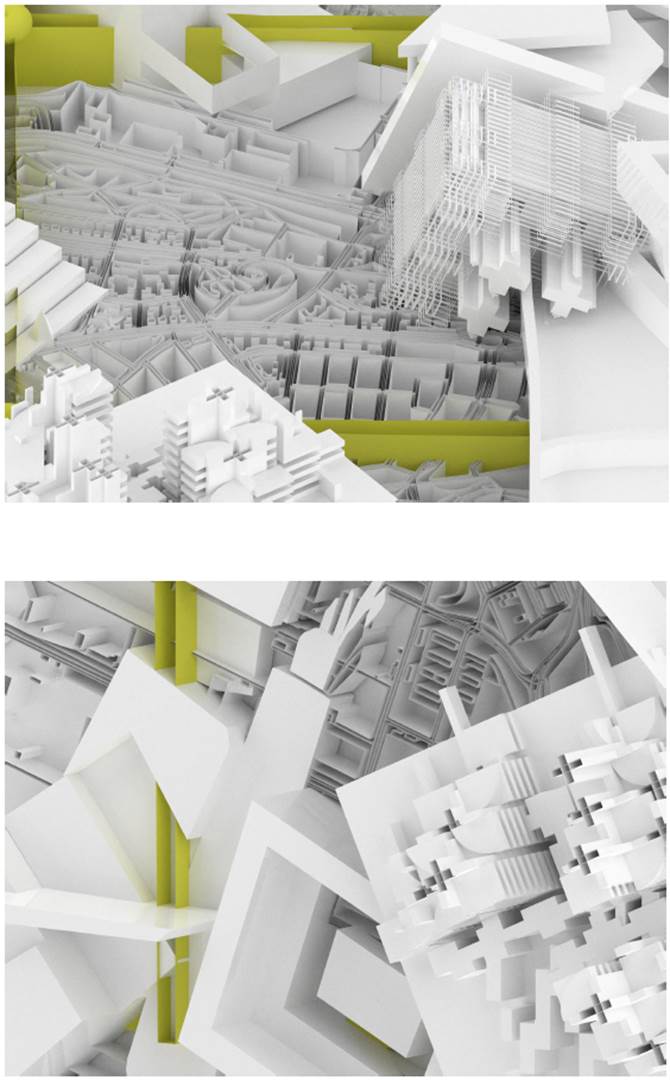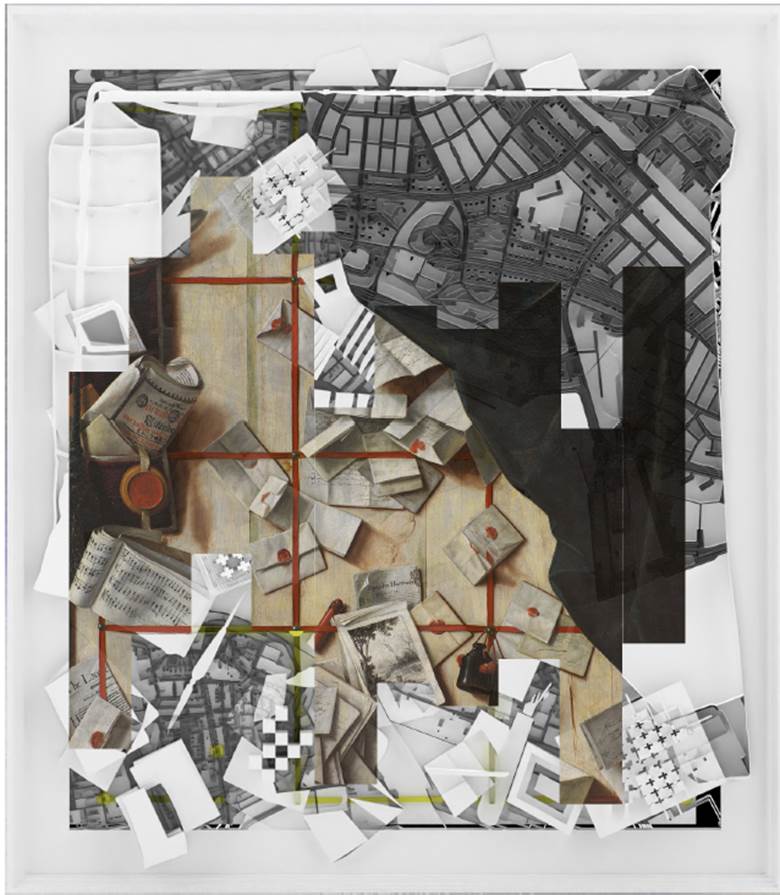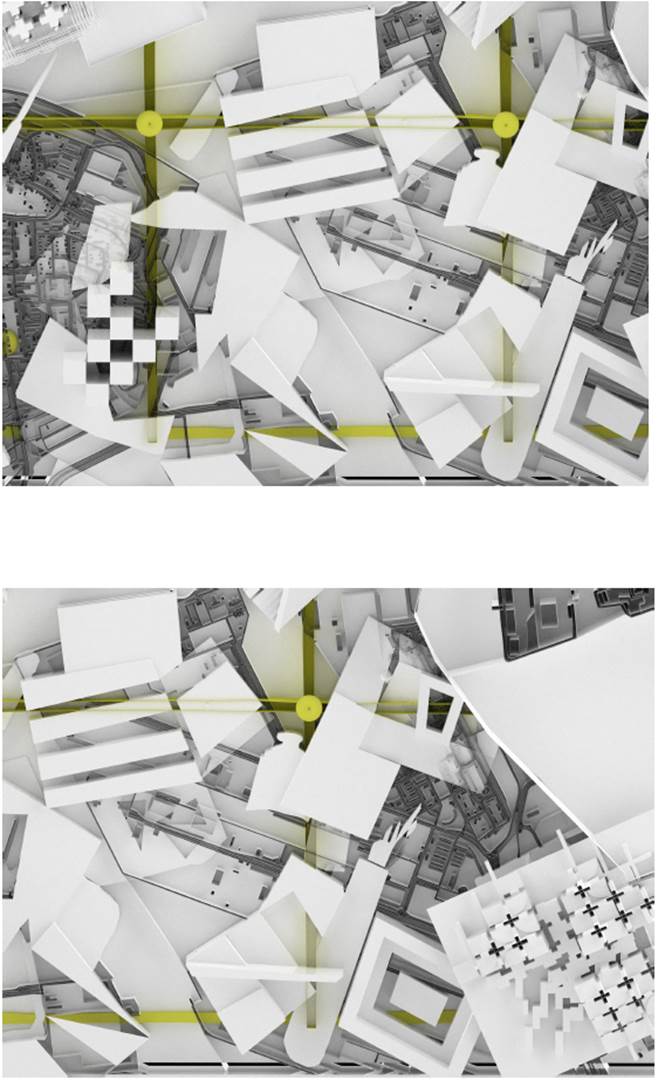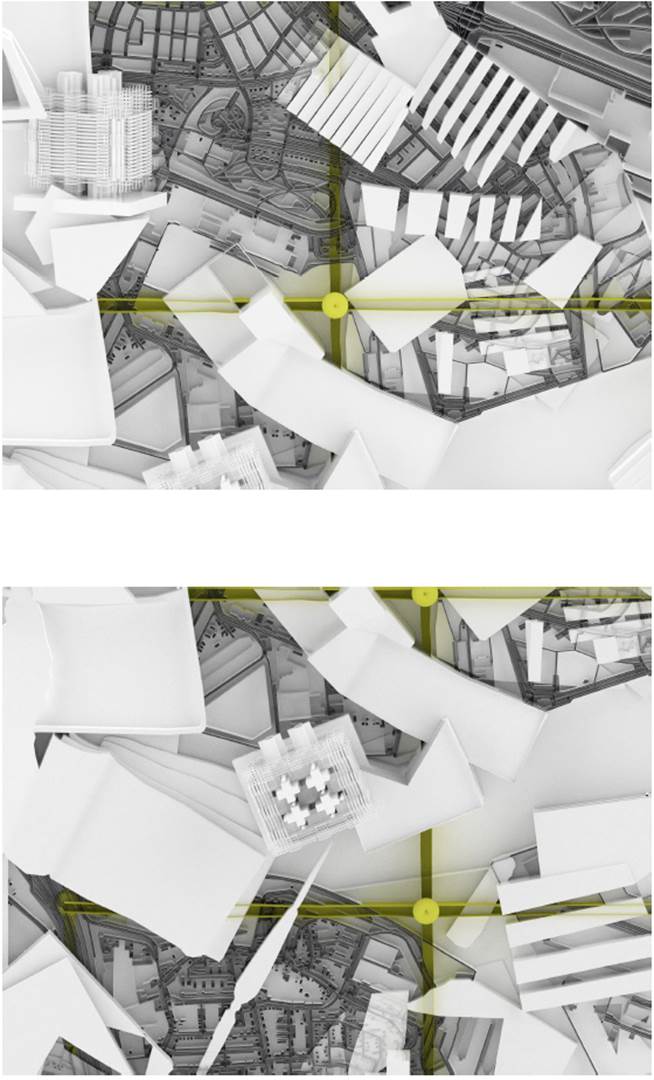"The Letter Rack" is a speculative exercise in exploring the emergence of new spatial relationships when we stop thinking of future cities in terms of figure/ground duality and instead start looking at them as a continuous assemblage of forms and signs.
This form of digital divertissement in drawings originates from the reinterpretation of the so-called "trompe l'oeil," a pictorial genre used for centuries to depict illusionistic scenes that give spectators the impression that they are facing real, three-dimensional objects. More specifically, the Letter Rack refers to the 1668 trompe l'oeil by Cornelis Norbertus Gijsbrechts, which represents a board partition populated by envelopes, objects, and a music book. The Letter Rack borrows the spatial organization of Gijsbrechts' painting and, in general, some of the ingredients common to the tradition of trompe l'oeil, such as the use of metaphor, allegory, or symbolism, to reverse their meaning. It turns realistic representations into a hypothetical scenario in which building types and urban spaces meet, collide, and fuse in novel configurations. In other words, The Letter Rack is an inverted digital trompe l'oeil.
If the reference to trompe l'oeil constitutes a latent and invisible matrix-the starting point of three-dimensional explorations-what The Letter Rack describes is a collapsed, abandoned cityscape, a composite sequence of architectural entities shaped by specific compositional devices: nine-square grids, modular structures, typical office plans, and inhabitable walls. Their chaotic disposition is counterbalanced by the presence of the rack, a Cartesian system of linear elements that acts as the only ordering element within this entangled composition, allowing the recognition of patterns of analogy and difference. The architectural singularities depicted in the Letter Rack arise from the magmatic surface of the city but, at the same time, collapse into it until they disappear.
In the interplay between forms and topological space, the Letter Rack is an ironic attempt to represent the past and the future, the figurative and the abstract, in one image. In its candor, however, the Letter Rack highlights some of the issues intrinsic to the current discourse on digital and post-digital culture; it speaks to the constant tension between the smooth and the rough, the assemblage and the fusion, the collage and the morphing.














